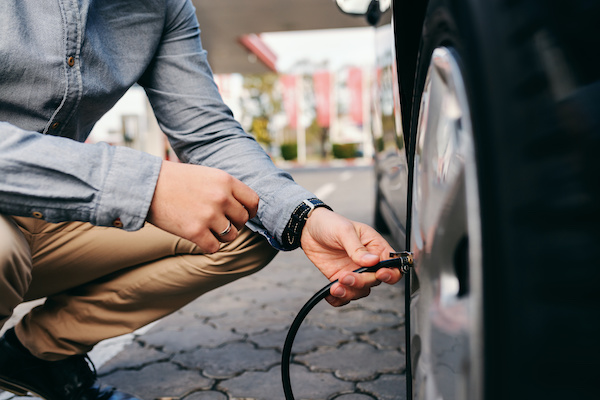
Proper tire pressure is not just about ensuring a smooth ride – it's a fundamental aspect of vehicle safety and performance. Underinflated or overinflated tires can lower fuel efficiency, reduce handling, and even cause tire blowouts. Today, we are here to teach you how to measure tire pressure correctly. It is a simple yet essential skill for every car owner.
What You'll Need:
- Tire pressure gauge
- Knowledge of the recommended tire pressure for your vehicle (found in the owner's manual or on a sticker inside the driver's door frame)
Steps to Measure Tire Pressure:
- Park and Prepare: Park your vehicle on a level surface and engage the parking brake. Make sure the tires are cold, as tire pressure increases as the tires heat up from driving.
- Locate Valve Stem: Remove the valve cap from one of the tires. The valve stem is a small, cylindrical protrusion on the wheel where you'll attach the tire pressure gauge.
- Attach Gauge: Firmly press the tire pressure gauge onto the valve stem. You may hear a slight hiss as you do this – that's normal.
- Read Pressure: The gauge will display the current tire pressure. Compare this reading to the recommended pressure for your vehicle's specific make and model. If the reading is slightly above or below the recommended pressure, it's time for a quick adjustment.
- Inflate or Deflate: If the tire pressure is too low, use an air compressor to add air until it reaches the correct level. If it's too high, release some air by pressing down on the valve stem gently.
- Recheck and Repeat: After adjusting the pressure, reattach the valve cap and recheck the tire pressure using the gauge. Repeat these steps for each tire.
- Maintain Regular Checks: Make it a habit to monitor your tire pressure at least once a month or before long trips. Properly inflated tires promote even wear and extend tire life.
Bonus Tips:
- Invest in a good-quality tire pressure gauge for accurate readings.
- Don't rely solely on the visual appearance of your tires to determine inflation – it can be deceiving.
- Keep an eye on your tire pressure monitoring system (if your vehicle is equipped with one) for quick alerts about pressure changes.
Maintaining proper tire pressure is a small effort that yields significant rewards in terms of safety, fuel efficiency, and overall vehicle performance. If you're unsure about your tire pressure, or if you notice uneven wear on your tires, visit University Chevron for a professional tire inspection and other services.